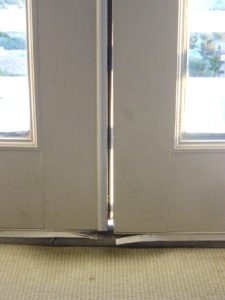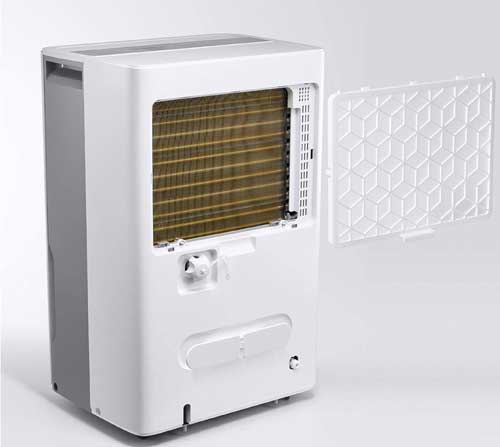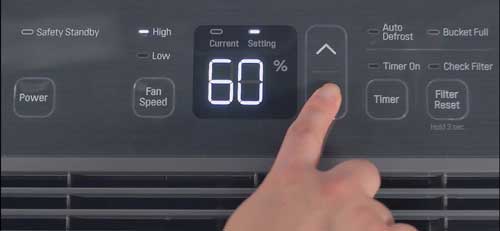A dehumidifier extracts excess humidity from your home, thereby creating an unsuitable environment for mold and dust mites, among other allergy and asthma triggers. But after how long will you derive maximum benefits from your unit when you get it running? Will you acquire your desired humidity level immediately or after a few hours?
To get an accurate picture, let’s jump right into the working of a dehumidifier.
- Dehumidifier Capacity against Humidity
- Dampness Level to Capacity
- How Long Should a Dehumidifier Run?
- Can a Dehumidifier Lose Its Effectiveness?
- When Should I Run My Dehumidifier?
- Can You Leave Your Dehumidifier on while on Vacation?
- When Should I Turn My Dehumidifier Off?
- What Makes Your Dehumidifier to Run Nonstop?
Right Out of the Box
Some dehumidifier models start extracting moisture almost immediately after installation, while others will take some time to adjust to their new environment. In most common cases, new dehumidifiers take 12 hours to run properly and achieve your desired humidity level. You can determine the moisture level in your home with the help of a hygrometer. The humidity level in your indoor environment shouldn’t go below 30% or beyond 60%.
Generally, the duration a dehumidifier takes to rid your room of unwanted moisture depends on several factors:
Dehumidifier Capacity against Humidity
A dehumidifier’s capacity doesn’t refer to the unit’s physical size but rather the amount of humidity it can extract from a given area within 24 hours. The commonly used dehumidifiers come with a capacity of 50 pints, 35 pints, or 22 pints. The higher the dehumidifier capacity, the more humidity the appliance can extract at a given duration.
Below is a chart showing the amount of time required to extract excess humidity in a 50 sq. ft. space at 82 degrees Fahrenheit to reduce or lower relative humidity (RH) from 90% to 40% and 80% to 50%
| DEHUMIDIFIER EXTRACTION PER CAPACITY | ||
|---|---|---|
| Capacity | RH 90% to 40% | RH 80% to 50% |
| 50 Pint | 11 Minutes | 6 Minutes |
| 35 Pint | 17 Minutes | 8 Minutes |
| 22 Pint | 34 Minutes | 15 Minutes |
Dampness Level to Capacity
You can easily measure your room’s dampness level using a hygrometer. This device will help you measure dehumidifier’s ability to remove excess moisture.
Table below shows the ideal dehumidifier capacity recommended based on humidity levels and room size approximately.
| RECOMMENDED (REC) DEHUMIDIFIER SIZE | ||
|---|---|---|
| Level of Dampness | Pint REC per 24 Hrs | Area in sq.ft. |
| Moderately Damp | 10 to 22 | 50 to 500 |
| Highly Damp | 22 to 50 | 500 to 1000 |
| Wet | 50 to 80 | 500 to 2500 |
| Extremely Wet | 80 to 120 | 500 to 2500 |
How Long Should a Dehumidifier Run?
Ideally, you should run your dehumidifier for at least 12 hours a day. This is, however, dependent on your unit’s capacity, features, and the level of dampness in your environment. For instance, you might need to run your appliance 24 hours a day if the space in question is extremely damp.
A dehumidifier stores the extracted water in a tank. If you wish to run your unit for hours, you need to consider the size of the reservoir. If the tank is small, you will need to empty it at least twice a day. However, you can save time and energy by purchasing a modern unit with a continuous drainage feature. Such an appliance allows you to connect drainpipe and discharge the condensate to a designated drainage location.
If your room is overly damp and you can’t afford to babysit your appliance, purchase a dehumidifier with a built-in auto-shutoff feature that comes in handy when the water tank fills up.
Can a Dehumidifier Lose Its Effectiveness?
A dehumidifier can last for almost a decade, but it may lose its effectiveness over time like any other appliance. The efficacy and lifespan of a dehumidifier largely depend on how you use and maintain your unit.
For example, suppose you run your dehumidifier every day all year. In that case, your unit will likely have a shorter lifespan than an appliance only used during the summer. Also, it’s not advisable to use a low-capacity device to dehumidify large rooms. Using such a dehumidifier will require you to constantly run it at its highest setting, which will ultimately shorten its lifespan.
There are no ground rules regarding how long you should run a dehumidifier. However, you could adopt some measures to improve your unit’s effectiveness and lifespan:
Providing Proper Ventilation
Improper ventilation promotes dampness in your room as the excess moisture has no way out. On the other hand, cracks on the doors and windows could allow moisture from the outdoors to leak in, causing your unit to overwork.

Above Picture Showcase: Leaky door increases dampness
Fixing Leaky Roofs and Pipes
Water leakage may lead to flooding and structural damage in your home. Also, using a dehumidifier without paying attention to the origin of your moisture issues, including leaks, is futile and might lead to your unit’s premature breakdown.

Above Picture Showcase: Signs of water leakage
Installing Exhaust Fans
Exhaust fans are mainly instrumental in bathrooms; hot showers will often generate excess moisture. A fan helps by sucking in the vapor, making your dehumidifier’s work easier.
Avoiding Heating Appliances
Unvented heaters contribute significantly to the moisture levels in your indoor environment and, therefore, overburdening your dehumidifier. Avoid vent-free furnaces and replace them with alternate electrical heaters. Please note if you have forced air central heating systems they are usually vented.
Regular Dusting and Draining of the Water Tank
Gently remove the debris from your unit with a soft brush to prevent clogging and damage to your dehumidifier’s internal components. Regular maintenance will increase your unit’s effectiveness and prolong its lifespan. Also, empty the water tank as soon as it reaches capacity. Timely drainage ensures continuous operation of your dehumidifier and prevents damage to the circuit board.

Frequently Asked Questions
When Should I Run My Dehumidifier?
Always run your dehumidifier any time you detect the following:
- Your room feels stuffy and uncomfortable
- Moist stains on the ceiling or walls
- Condensation on the windows
- Visible mold
- Musty odors
Can You Leave Your Dehumidifier on while on Vacation or Over Night?
Many dehumidifiers come with an intelligent feature that automatically turns the unit off when the water tank reaches capacity. This feature protects your appliance from self-damage while also protecting your home from flooding. For a dehumidifier to run nonstop, you need to empty the tank regularly. You definitely won’t be able to empty the tank while on vacation or over night.
However, if your dehumidifier comes with a drain port, you can connect a pipe to the unit and direct the hose to a drainage location. So yes, you can leave your dehumidifier running while on vacation or over night. Nowadays smart dehumidifiers exist in the marketplace and would be recommended to use while you decide to go on vacation.
When Should I Turn My Dehumidifier Off?
If you’ve never used a dehumidifier in your home before, you can run the unit for two to four consecutive weeks. This will give your machine ample time to dry the air in your space and the organic materials in your room, such as books, furniture, and clothing.
Another factor that might necessitate running your dehumidifier continuously is the weather in your location. If your area constantly gets rain, you might require running your unit nonstop.
What Makes Your Dehumidifier to Run Nonstop?
Most dehumidifiers come with a built-in humidistat that enables the unit to measure the room’s current moisture levels and temperature. This feature causes the dehumidifier to switch to sleep mode automatically when the room’s moisture levels match your desired humidity.
Conversely, the same function will make your unit operate continuously if your home’s humidity exceeds your preferred moisture levels.
The Bottom Line
Most dehumidifiers take up to 12 hours to extract excess humidity from your indoor environment.
RELATED: May be you need a new dehumidifier here are some things that you should consider.
Dehumidifier capacity and the level of dampness in your room help determine the duration over which you should run your unit. More factors contributing to dehumidifier effectiveness and expediency include room ventilation, leakages, and the overall health of your appliance.
